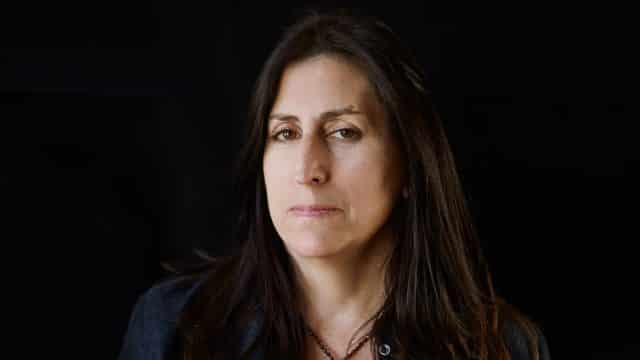A line in the news. As an ex-journalist, I experienced the terrible and bitter agony of losing the crucial part of a story in translation. No matter how good you can write, your words will never be able to capture the feeling you experienced. The sense of danger, the fear trembling in the voice of your interviewee, the misty tear in an eye that tells you tons. Words have their limits if you want to paint an experience.
For years I’ve been following the endeavors of Nonny de la Peña, an American journalist, award-winning documentary filmmaker, and dynamic entrepreneur. De la Peña pioneers her way into making the traditional “news-writing” into a fully immersive and sock-shaking experience.
Empathic technology
To immersify the story, you need new technologies to bring the story to, and around your target audience. Nonny de la Peña is actively using Virtual and Augmented reality to bring her audience literally in the heart of the action. Experiencing a news story from within, as an active witness, guarantees an empathic link with what is happening. “Virtual and augmented reality create precious spaces in which you are physically vulnerable and able to connect with a story in a much more powerful way than other mediums,” she addressed the audience at SXSW: “This vulnerability creates a powerful emphatic link with what’s happening. Immersive storytelling takes away the traditional distance between the reader and the story. This distance is also an emphatic buffer. Immersive storytelling brings you right where the action is. It feels real. It’s around you. You’re in it. There is no filter.”
The Godmother of VR
Nonny de la Peña is a rock, a monument. Her passion is vibrant, contagious. She is the founder and CEO of the Emblematic Group, a digital media company focused on immersive virtual reality. She created as a one-woman-army the very genre of immersive journalism. Combining disturbingly real 3D graphics with non-filtered real witness audio tracks in virtual reality headsets, proved to re-create events with a close to reality immersive empathic impact.
She holds the prestigious Knight Innovation Award; Wired Magazine labelled her #MakeTechHuman Agent of Change, Forbes calls her the “Godmother of Virtual Reality”, and Fast Company lists her as one of the “13 People Who Made the World More Creative.
Syria: virtual bomb, real tears
De la Peña is not afraid to tell real-life stories about burning hot topics, and she constructs her story to create deep empathy for the audience. “Nearly one half of Syria’s 23 million people have been displaced in its civil war and no group has been as severely affected as children. Children make up more than half of the three million refugees living in camps or makeshift housing and some news reports indicate that children are actually being specifically targeted in the violence, “ De la Peña describes how she created a virtual piece of immersive journalism that focuses on the violent day-to-day-life of these children: “The project -created in 2013- places the viewers in Syria, on a marketplace, where they witness a child playing on a street corner at the very moment when a missile strike hits.”
The bomb might be 3D, the tears and screams of the immersed audience are very real: “If you can feel the power of rattling gunfire overhead, exploding rockets nearby, and if you stand shoulder to shoulder with crying Syrians as they carry their death and wounded, you’ll understand this tragedies from the inside out. It becomes so much more than just as another headline,” said de la Peña.
Flat is death. Volume is the future.
De la Peña continues to innovate. 360 degrees, full immersive, she masters it. Now, she is working to give the whole experience literally body: “In our real life, we don’t experience the world as flat, we do not see it in pixeled 2D. We experience it in volume, in 3D and in high definition. This medium is still se very young, full of potential. Waiting for immersive content makers to come in and turn it into something very special.”
True Mobile and 5G are the game changers
“Before, we were slowed down by the technology”, Nonny de la Peña explains: “Virtual reality headsets were heavy, cumbersome. Full of wires linked to heavy computers and servers. Data had to flow through cables as thick as a fist. Nowadays, with the new generations of Oculus Rift and the like, you have light, independent units. With 5G we have the data capacity to live-stream from the cloud. This makes the experience less cumbersome, more real. With the excellent possibilities of cheaper solutions, like Google cardboard, it’s easier to spread immersive storytelling to a much wider audience.”’
With cheaper headsets and an increased demand for fully immersive content, it is quite possible that journalists will soon be able to place viewers inside compelling 3D news events from the comfortable security of their own phones.
Life changing
Hugh Forrest, SXSW Chief Programming Officer is clear: “Nonny de la Peña has redefined the standard for how human creativity and technology can work together seamlessly to create engaging narratives and life-changing experiences. Her work in virtual reality reflects the cross-industry adoption and experimentation that we see trending throughout our programming.”
I remember the girl sweetly singing. I remember the smiling faces, the cozy market corner. I remember the roar and explosion. I can still feel my hands shaking when I think of the little boy that was carried away. I remember it as if it was yesterday. It was four years ago. And it was virtual.
I can only imagine the burden of memories people who lived through this in real life carry with them.
Nonny de la Peña teached me to look with all my senses, and to tell the story of the soul. That what matters. And that is so much more than a line in the news…












